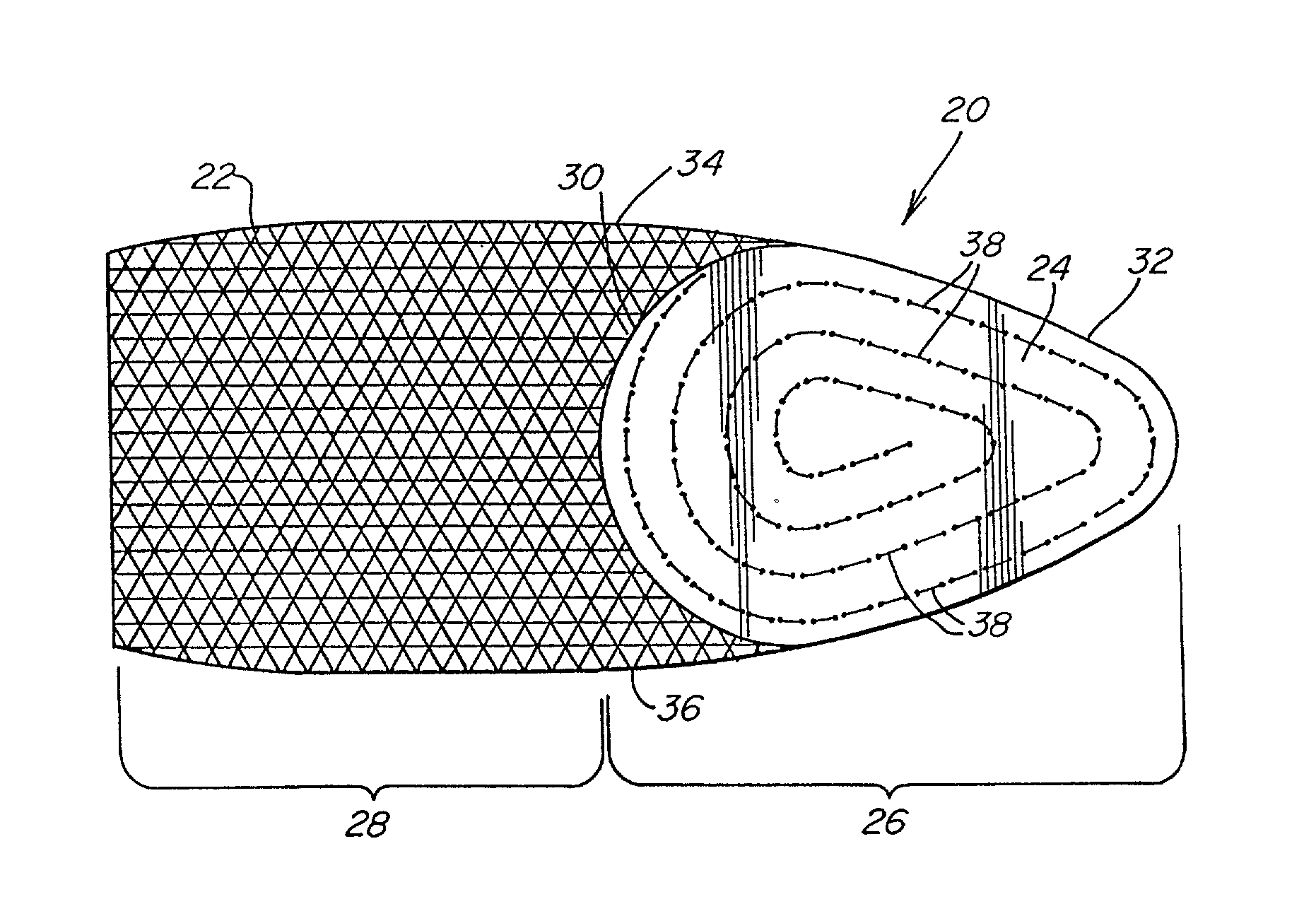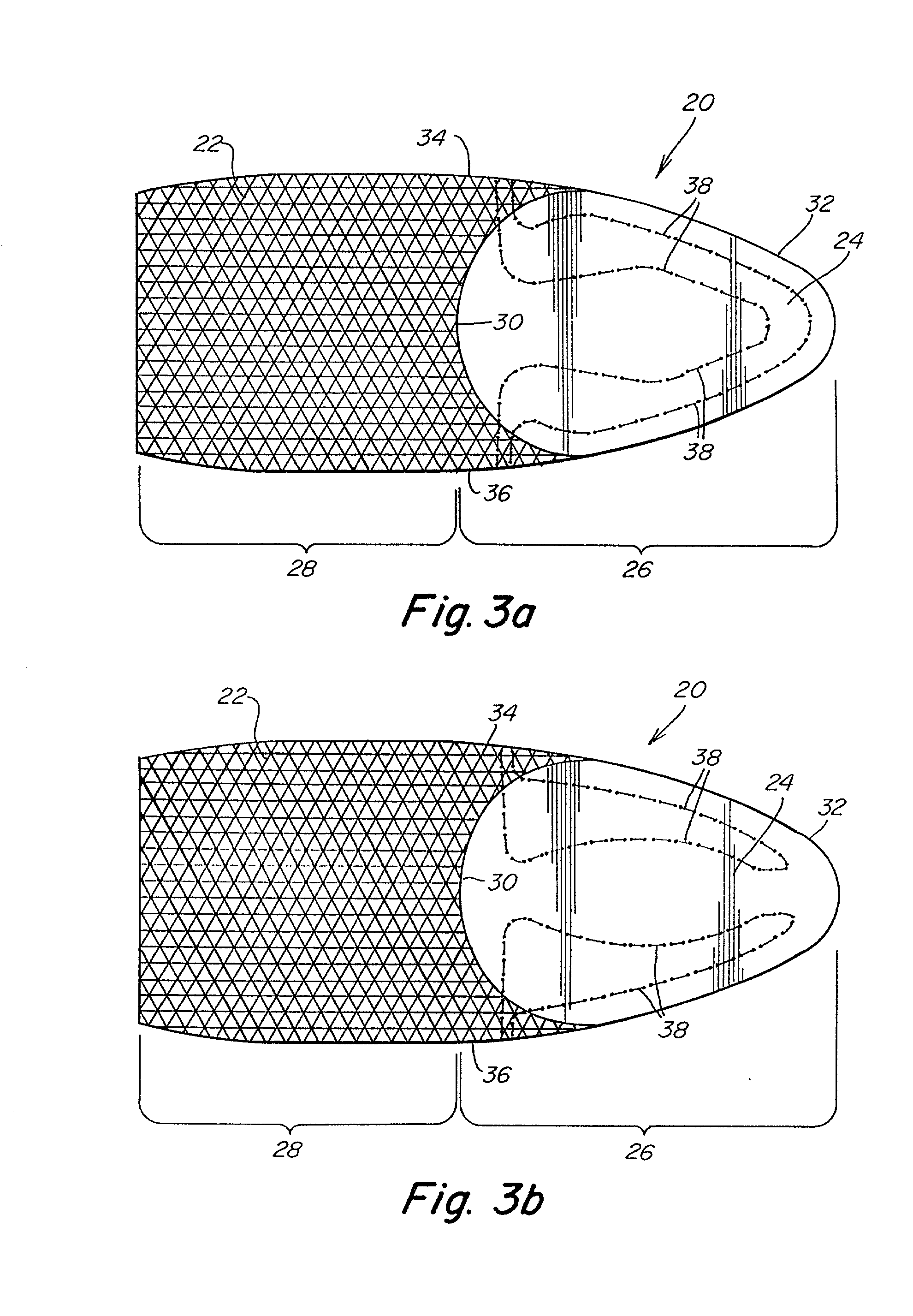Prosthetic repair fabric
a technology of prosthetic mesh and fabric, applied in the field of prosthetic mesh materials, can solve the problems of postoperative adhesion between the mesh and the sensitive tissue or organ, adversely affecting the structure and function of the spermatic cord,
- Summary
- Abstract
- Description
- Claims
- Application Information
AI Technical Summary
Benefits of technology
Problems solved by technology
Method used
Image
Examples
Embodiment Construction
[0022] FIGS. 1-2 illustrate one embodiment of a composite prosthetic repair fabric for repairing soft tissue and wall defects, particularly inguinal hernias, by promoting enhanced tissue ingrowth while limiting the incidence of postoperative adhesions to the repair fabric. The prosthesis 20 includes a tissue infiltratable fabric 22 and an adhesion resistant barrier 24. The fabric 22 is formed of a biologically compatible, flexible material that includes a plurality of interstices or openings which allow sufficient tissue ingrowth to secure the composite to host tissue after implantation. The barrier 24 is formed of a material that does not substantially stimulate tissue ingrowth and adhesion formation when implanted in tissue to limit the incidence of postoperative tissue adhesions between the fabric and adjacent sensitive tissue and organs. A portion of the prosthesis remains completely free of barrier material on both sides of the fabric to enhance tissue ingrowth thereto.
[0023] T...
PUM
 Login to View More
Login to View More Abstract
Description
Claims
Application Information
 Login to View More
Login to View More - R&D
- Intellectual Property
- Life Sciences
- Materials
- Tech Scout
- Unparalleled Data Quality
- Higher Quality Content
- 60% Fewer Hallucinations
Browse by: Latest US Patents, China's latest patents, Technical Efficacy Thesaurus, Application Domain, Technology Topic, Popular Technical Reports.
© 2025 PatSnap. All rights reserved.Legal|Privacy policy|Modern Slavery Act Transparency Statement|Sitemap|About US| Contact US: help@patsnap.com



